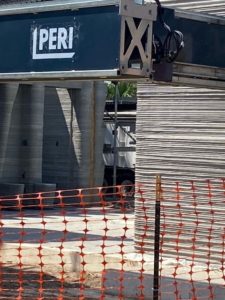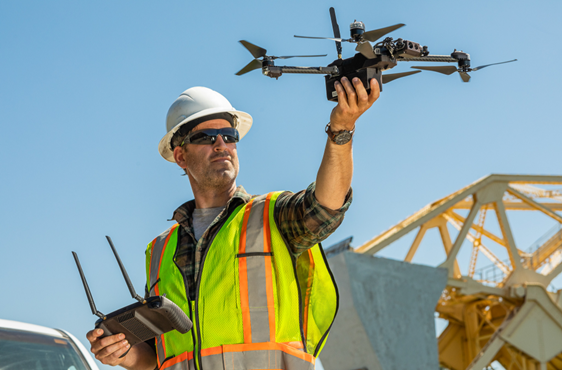From a simple idea to functional human organs, 3D printing has come a long way since its infancy. The technology has helped make leaps and bounds in several fields and in recent years has made waves in the construction industry. Buildings are constructed layer by layer using machines that extrude the printing polymer from a nozzle much like layers of icing on a cake. It would seem that Texas has cornered the market in additive manufacturing construction in the United States as many of the largest free-standing 3D printed structures in the U.S. are located there. Structures housing single families to up to 72 people including functioning restrooms and showers have been and are being built on our very own soil.
Most of these structures are made using a concrete or concrete polymer extruded from a nozzle moved by the printer. These homes and buildings are designed and 3D rendered on computers then these building instructions are sent to the on-site 3D concrete printers that simply follow the coded instructions. In many cases this reduces the need for on-site labor and increases speed and efficiency.
The largest 3D printed housing community is being built in Austin, Texas. In an attempt to alleviate the current housing crisis, the neighborhood will feature 100 3D printed single-story homes. With houses as large as 3000 square feet , they were designed to be extremely weather and natural disaster resistant. This project is on an unprecedented scale for the United States. There are plans to break ground on this project this year, but the exact location has yet to be disclosed.
California is also welcoming a 3D printed community. Made up of 1,450 square foot homes made of a stone composite material that is fire and weather resistant. Located in desertified Southern California this community plans to be the first 3D printed zero net energy community in the United States. According to the United States Department of Energy zero net energy refers to buildings designed to consume as little energy as possible and most often run off of renewable energy sources such as wind and solar.
 Another groundbreaking project pioneered in Texas is being undertaken by the Texas National Guard. New 3D printed barracks were recently completed in Camp Swift, Texas. Constructed in less than a year, the 3,800 square foot barracks can house up to 72 soldiers and was constructed at a fraction of the cost of similar barracks built traditionally. There are plans to build additional 3D printed structures at places such as Camp Bowie, Camp Maxey and potentially Camp Mabry. The Camp Swift military barracks currently holds the record for the largest 3D printed structure in the United States. Additionally, it is also the first 3D printed military barracks in the world.
Another groundbreaking project pioneered in Texas is being undertaken by the Texas National Guard. New 3D printed barracks were recently completed in Camp Swift, Texas. Constructed in less than a year, the 3,800 square foot barracks can house up to 72 soldiers and was constructed at a fraction of the cost of similar barracks built traditionally. There are plans to build additional 3D printed structures at places such as Camp Bowie, Camp Maxey and potentially Camp Mabry. The Camp Swift military barracks currently holds the record for the largest 3D printed structure in the United States. Additionally, it is also the first 3D printed military barracks in the world.
At the moment, the world’s largest 3D printed home is for sale in Riverhead, New York. At 1,400 square feet the three bedroom, two bathroom house is currently up for $299,999 printed in eight hours over the course of eight days. The home was built using ARCS patented technology. According to the design firm SQ4D, this technology reduces on sight labor requirements and costs. With the way 3D construction printing is growing, it won’t be long before this home is surpassed in size and scale.
For example, another prominent figure in the 3D construction printing industry is PERI. PERI Construction is currently partnered with CIVE to construct what appears to be the the largest 3D printed single family home in the United States. At two stories and 4,000 square feet ,the project is an impressive feat of engineering and an important milestone in the world of 3D construction printing. Beyond the borders of the United States, PERI built Germany’s first 3D printed house.
From New York to Texas to California additive manufacturing is taking the United States construction industry by storm. 3D printing large structures and communities such as these has a variety of benefits. The additive manufacturing process is quicker and typically more cost effective than traditional construction. Also it is being used in places like Austin to aid in solving the housing crisis and California to promote sustainable, and zero net energy housing. This technology has potential beyond houses and buildings. Several countries have had success printing bridges and many private companies are using additive manufacturing in space technology and crafts. Seen by many as the next step, additive manufacturing construction has the potential to not only change the construction industry but the world.






